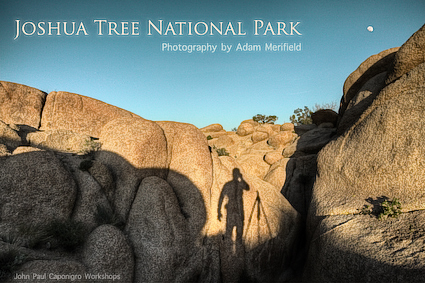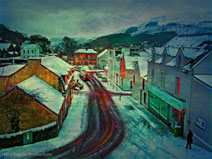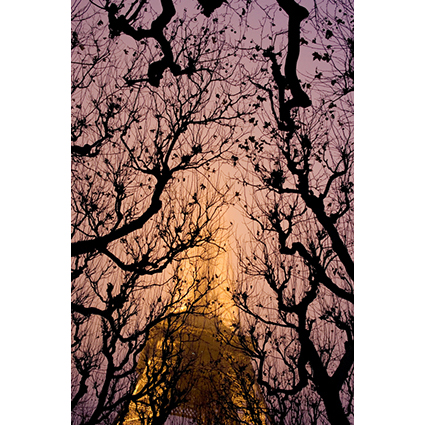Alumni Success Stories
Are you an Alumni with a success story?
Tell us about it!
Read More
Are you an Alumni with a success story?
Tell us about it!
Read More

Adam Merrifield made the most of our recent workshop in Joshua Tree. He came away with more than a few hero shots and a set of related images to support them.
Read about his experiences and see his images on my Alumni blog.
Visit his website for more.

Adam Merifield made the most of our recent workshop in Joshua Tree. He came away with more than a few hero shots and a set of related images to support them.
“Being in Joshua Tree National Park is like walking through the dream scape of a stoned conversation between Salvador Dali & Dr. Seuss. Whimsical, bizarre, barren & curiously impermanent this environment embodies all that is surreal and offers the photographer a unique and challenging environment to explore their creative vision.
John Paul Caponigro’s workshop was an experience I won’t soon forget. It seemed sincerely aimed at forwarding each participant’s goals in photography. Me: I was seeking a spark of inspiration and a new perspective on seeing. JP delivered on both. He offered strategies that really resonated with me; he focused on exploring the final 20 and the nuances of what can be. As a result, I am convinced that many of the best images I captured were of scenes I would have walked right past a week prior.”
Read More
 A couple of my alumni placed in the iPhone Photo Contest.
A couple of my alumni placed in the iPhone Photo Contest.
Find out more here.

Find out how Neil Enns creates custom portfolios and portfolio covers on my Alumni Blog.
He can do it for you too! Find out about what he has to offer you here and here.




My Alumni and I have been having a lot of fun with our iPhones.
Harry Sandler won one of 10 Wacom Tablet Winners.
Jim Graham won one of 25 Apple App Store Gift Cards.
I won one of 30 Adorama Gift Cards.
Harry alternates between his PhaseOne P65 and his iPhone.
Jim alternates between his Nikon D3X and his iPhone.
I alternate between my Canon 1DS MKIII and my iPhone.
See the pattern?
It’s hysterical to see Harry doing HDR panoramas with his iPhone propped on top of his Phase back. You’ve got to be careful telling jokes around Jim because they’re liable to be posted as video shortly afterwards. I put words in their mouths and thoughts in their heads with comic apps. We’re laughing all the time.
See all the winners here.
http://contest.adorama.com/about
Stay tuned for news on my upcoming iPhone workshop.

Back in December of 2009 I had the pleasure of joining John Paul on a trip to Antarctica. On that trip I saw firsthand the beautiful folio packaging that Brooks Jensen <http://www.brooksjensen.com> created to sell his work. I very much enjoyed the presentation style, as it is an intimate way to share images with people and a nice departure from large, framed, images.??When I returned from the trip I looked all over for a source of covers to do my own folios <http://www.danecreekfolios.com/folios-for-sale>, but it turns out that nobody (including Brooks) offered them for sale. What was a chance viewing on a ship in Antarctic waters has now become a small side business for me! I now manufacture and sell folios covers <http://www.danecreekfolios.com/> for photographers who are interested in using folios to present or sell their work.??The fun part for me about working with folios is they are an excellent way to explore storytelling and photo essays. John Paul has great guidance on these two topics in his Illuminating Creativity lessons <http://www.johnpaulcaponigro.com/downloads/creativity/creativity.php>, and the folios are a perfect size to hold a story of 7-9 images plus title page and colophon. I am currently working on a project <http://danecreekfolios.squarespace.com/blog/2010/4/12/second-beach-wa.html> involving images of the Washington Coast that will be packaged as a folio with images assembled using John Paul’s Photo Essay technique.

Jim Graham’s newest exhibition explores the islands of Nantucket and Iceland.
Island is on display from February 5 – 27 at the Hardcastle Gallery
Find out about Hardcastle Gallery
Find out about Jim Graham
From Jim Graham …
There are times in our lives that we make choices without knowing why or what the result of that choice will be. In July of 2001 I stood in a driveway and was admonished to, “Go to Maine, do a show, and don’t loose too much weight.” All journeys have secret destinations of which the traveler is unaware.
I was, at least with the first two suggestions successful. That trip to Maine brought me to my first workshop with John Paul Caponigro. And with his help and support I managed to find a number of images that were worthy of being in a show. That December, six months later, I opened my first solo show, “Along the Waterline.” This coming February, 9 years later, I’ll open yet another show, my ninth since first meeting John, “Island.”
This show holds a collection of images from two islands, Nantucket and Iceland. Each a location is a singularity. Each has its own story. Each offers infinite opportunities. It is part of the photographer’s job to see more intensely than most people do. He must have and keep in him something of the receptiveness of the child who looks at the world for the first time or of the traveler who enters a strange country. I’d like to think I still have that childlike wonder. But I’d also like to believe that over the years that John has helped to open my eyes and share some of his insight and vision. I do know that he has offered me many visual possibilities. And given me the gift of a vision that I might not have had had I not made that initial trek to Maine.

Alumni Jeff Fox recently published his first book. He shares his experience with self-publishing here …
Self-publishing a book: My adventure so far
In June 2008, I took my first workshop with JP, “Illuminating Creativity.” It so inspired me that six months later I began work on my first book. Published in April 2009, Yankee Stadium: The Final Game is a photographic essay, with commentary, on the passing of The House That Ruth Built. (As I write, the original Yankee Stadium is in the process of being dismantled and replaced by a public park.)
The book is sold on Amazon and Barnes & Noble. It has also been featured on several blogs that cover the Yankees, as well as in USA Today Sports Weekly.
In the hope of informing other would-be authors, I share below some of my experiences and what I’ve learned from them so far.
The project was driven by one of my passions: A lifelong Yankee fan (I’d been going to Yankee games since 1962), on September 21, 2008, I set out for the final game ever played at the Stadium, intent on capturing and preserving the experience for all time. There was no conscious intention to produce a book, although I can’t say the idea wasn’t floating around somewhere in the back of my mind. Armed with my Nikon D300 and a couple of lenses, I tried to capture the feeling of being in the neighborhood on that historic day, as well as at a variety of locations within the Stadium itself—in and under the stands, plus on the field before, during, and after the game.
A couple of months later, I decided to turn the photos into a book, using a print-on-demand service called Blurb.com. The nice thing about this service is that you can download free software with templates that make laying out a book so easy that you can do it in a matter of a few days. The problem with such services, I soon learned, is that they are too expensive (at least for photographic books) to be able to sell books profitably on the open market. However, Blurb.com proved a wonderful tool for prototyping my book and, just a couple of weeks after I started, I had a bound book to show people. There is a huge difference between describing a book, or even sketching one out, and having one that people can hold and flip through.
If you’re interested in producing a relatively small number of copies of a book, no more than a dozen or two, to showcase your work or for colleagues, friends, and relatives, a service like Blurb (or Lulu) is all you need. But after I got raves from a number of people who saw my protype, my goal quickly became selling thousands of books in the marketplace. With the baseball season a few short months away, there really wasn’t much time to get an agent and find a publisher. So I formed my own publishing business (Veridico Publishing LLC). And, after some research, I decided on a more economical way to print: A commercial printer using a four-color press.
Conventional printing is economical, but driving down the cost per copy can require a significant up-front investment. Which you means you’d better have some cash on hand and be confident that you can eventually sell all, or at least most, of what you print. (Printing abroad is generally cheaper, but I decided to print my book in the United States.)
I’ll spare you all the gritty details of designing the book and getting it ready to print. Suffice it to say that the process was laborious, often maddeningly frustrating, and seemingly endless. But with the help of a professional designer I knew, I had everything ready for the printer in about seven weeks. (It also helped that I’m a professional editor.) Only after the printing was underway did I learn that what I had just been through was not the toughest part of publishing a book. Neither was getting the book listed on Amazon (Among other things, I had to buy an ISBN number and bar code; set a retail price; buy domain names for my own web site; and file as a business in a couple of states).
The toughest part of publishing a book, basic as it may seem, is making your best customers aware that the book exists. Amazon helped; it can do a lot to promote your book, though you must give up a chunk of your royalties in return. The essential problem in marketing is that, for an unknown author, traditional advertising is unprofitable. You have to sell a lot of books that way just to break even.
That leaves a number of other ways of getting the word out; I’ve tried the following: Street distribution of postcards (didn’t seem to be very effective); getting press and blog coverage (very effective, but requires that you or your book be newsworthy); book signings (small bookstores and public libraries worked well; large-chain bookstores haven’t yet); specialty stores (souvenir stands near Yankee Stadium have been so-so); blogging (my own blog, YankeesGadfly, has directed traffic to my web site and increased my visibility to search engines; Twitter (my tweets have been very effective at getting traffic for my site); Google Adwords (buying ads on Google has provided millions of ad impressions online very cheaply, though it’s not yet clear how many have turned into sales). I’ve also publicized the book on Facebook.
My next effort is to offer the book at a sports memorabilia show. I’m also considering street vending in NYC at opportune locations. To market a book, you must be resourceful and endlessly creative.
So far, I’ve sold a fair number of books, though I’m not yet in the black. (Not only must revenues cover printing costs, but there are other overhead items, such as shipping, legal, web hosting, etc.) But I’ve learned a lot. And, should I produce another book or two, I believe this will be a profitable business, as well as a lot of fun.
If any JP alumni would like to get in touch with me, drop me a line at: jf@pipeline.com

Alumni Ken Carl recently placed as a finalist in PDN’s World in Focus Contest and is in the running for Bella Pictures’ Photographer of the Year award. A long time alumn of mine who has since turned pro. Ken had this to say about a great year …
Read more on my Alumni blog.